No Price Match Policy = Fewer Repeat Sales

But what about most of the other online stores you’d find? The truth is that while a solid number of national retailers offer a price match pledge online, a good majority e-retailers do not. While there have not been specific studies conducted that compile aggregate percentages of e-retailers that do or do not offer price match guarantees (before or after purchase), some of the best known brands do.
How does offering such a policy put you in strong contention to earn the business of research savvy webroomers? We’ll cover all angles with this in-depth guide.
Webroomers Are Changing the Game
Did you know that most online shoppers are actually webrooming before they make a purchase from your store? A Retail Perceptions study found that 88% of shoppers webroom online simply to compare prices between stores before they make a purchasing decision. 75% of them are doing it to find the lowest price; 72% do it to compare products; 71% are conducting personal research.
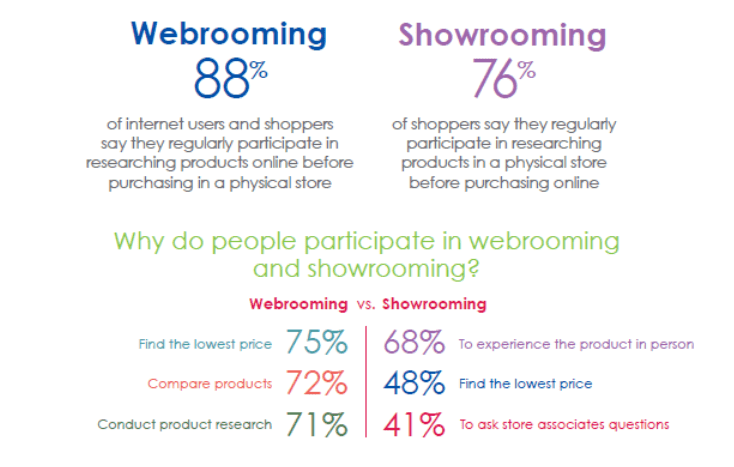 Needless to say, the majority of shoppers are looking for the best deal before they add an item to the shopping cart. If you are not offering the lowest price, and you are not pledging to match it if they find it elsewhere, you are saying no to more conversions and repeat business.
Needless to say, the majority of shoppers are looking for the best deal before they add an item to the shopping cart. If you are not offering the lowest price, and you are not pledging to match it if they find it elsewhere, you are saying no to more conversions and repeat business.
Take a look at this chart (below), it’s a list that was created by Business Insider comprising the top retailers in the U.S. They all maintain a strong online presence, but their brick and mortar locations have been suffering because shoppers compare prices online (webrooming) and often find a better one. With better price matching methods in place, these retailers could be capitalizing on showroomers, as opposed to losing prospective customers to the competition instead.
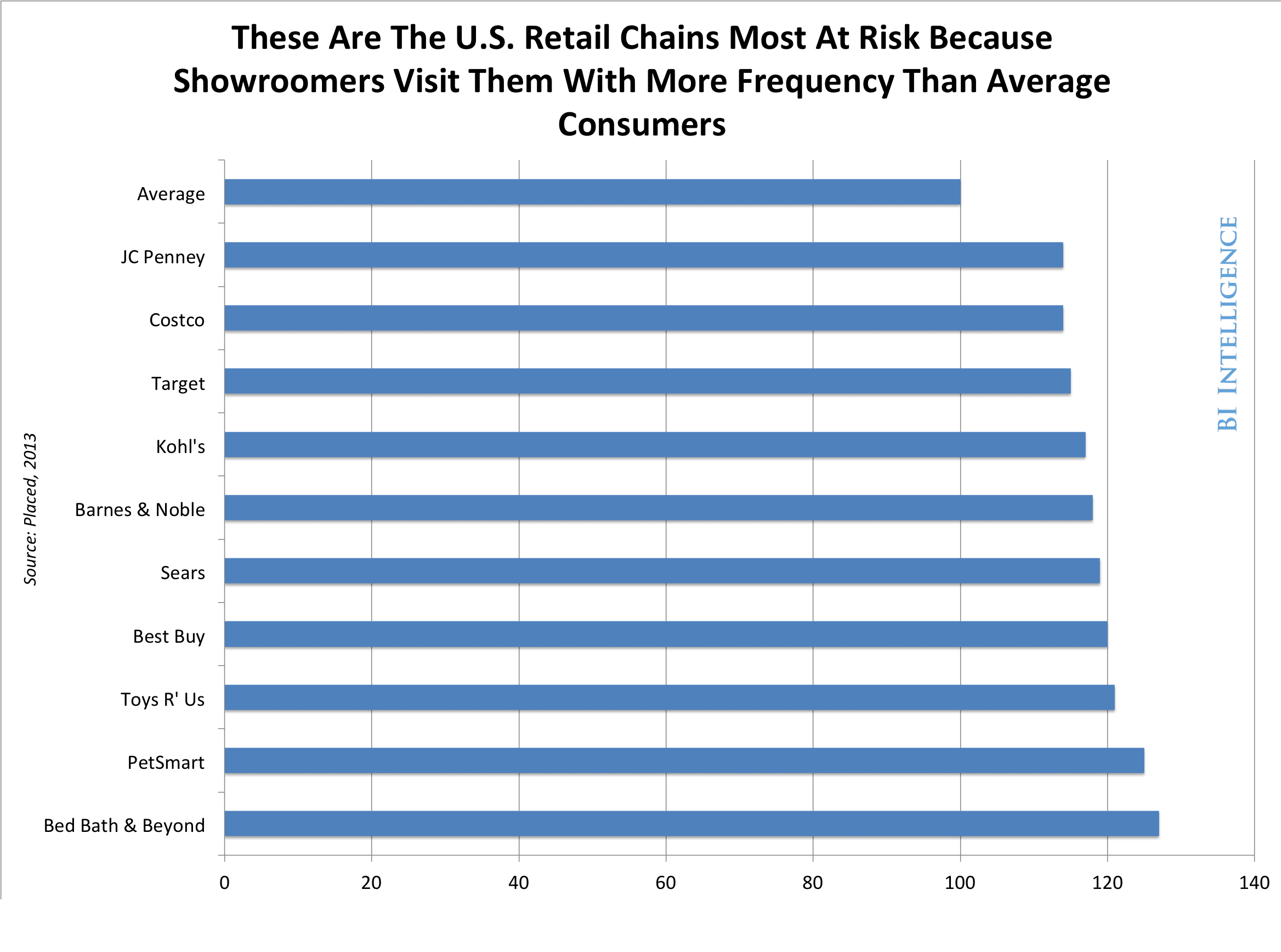 In another example, a survey that was conducted by Survey Monkey, polling consumers regarding price matching yielded some surprising results about big box retailer, Best Buy. A vast majority of consumers would be likely to make their purchase at Best Buy, as opposed to showrooming over to Amazon or another retailer, if the price was matched for them. As the chart below reflects, you can see how price matching is one of the surest revenue producing ecommerce pricing strategies that you can implement.
In another example, a survey that was conducted by Survey Monkey, polling consumers regarding price matching yielded some surprising results about big box retailer, Best Buy. A vast majority of consumers would be likely to make their purchase at Best Buy, as opposed to showrooming over to Amazon or another retailer, if the price was matched for them. As the chart below reflects, you can see how price matching is one of the surest revenue producing ecommerce pricing strategies that you can implement.
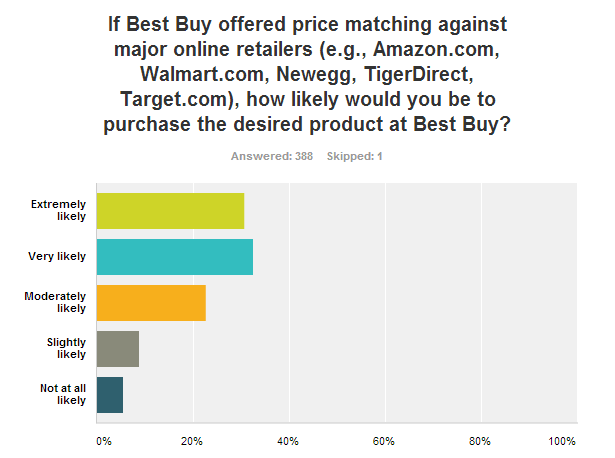 A study that was conducted by Merchant Warehouse yielded some interesting findings, too. The results found that 69% of shoppers on smartphones were webrooming to find the best price.
A study that was conducted by Merchant Warehouse yielded some interesting findings, too. The results found that 69% of shoppers on smartphones were webrooming to find the best price.
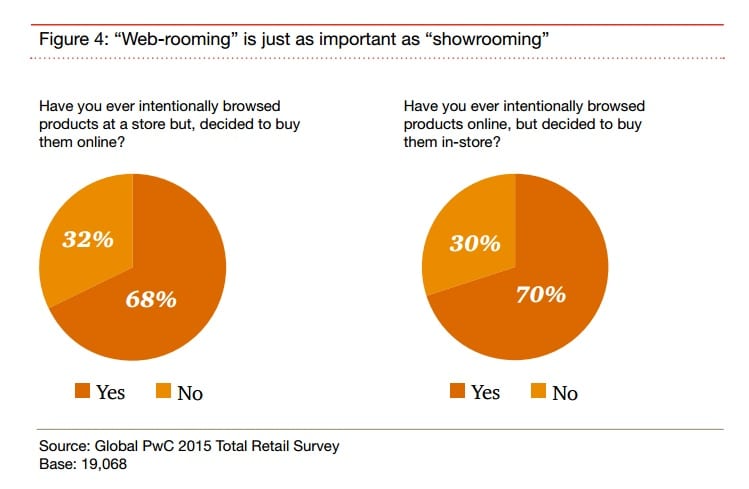
The Big Boys Set the Pace
A Wall Street Journal publication revealed that national chains are deriving an estimated 40% of their sales from the internet, namely because they are offering order or shopping apps that are convenient for consumers to use. And, most of these apps prominently feature a price-match pledge to appease to the webrooming, smartphone-toting generation of the modern age.
In a related MasterCard study, it was found that the primary reason why medium-sized online businesses were struggling to compete was because they were not committing to investing in the right technologies to survive in an omni-channel ecommerce environment.
“Our research shows that the gap in resources between the mega-retailers and smaller-scale merchants has led to a lack of commitment to develop the technology that can enable growth, restore competition and optimize the customer experience,” the MasterCard study explain.
But the landscape is beginning to shift. A Palo Alto Software survey that polled more than 500 medium-sized online retailers found that a majority of them are planning or are already investing in new technologies to better compete. According to the study, 48% of SMBs are investing at least $5,000 or more in technology in a given year, while 31% are willing to invest as much as $10,000 or more if needed. A majority 81% of SMBs surveyed said they have plans to invest in more technology in the future.
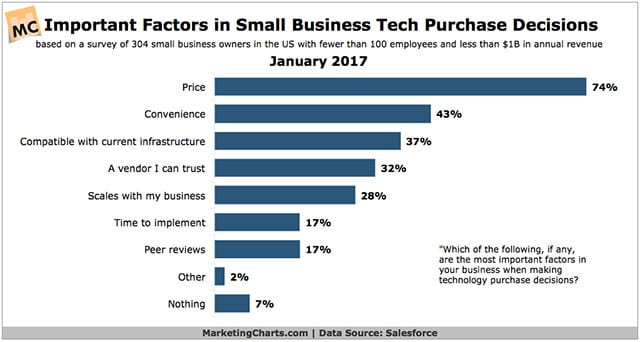
Price Matching is a Loyalty Builder
Price matching is one of the best customer loyalty building tools online retailers can use. Among the cadre of benefits that price matching gives your store, it’s mostly free because in order to match a price, you merely lower your profit margin on a one-time purchase to earn loyalty and long term retention from a customer. It’s truly win-win.
So much so that in a related Biz Journals report, covering a survey from research firm BDO, one in six retailers agreed that their most effective marketing strategy was to offer price matching online. That’s an uptick from just 10% of online retailers that agreed back in 2013. And plenty of online retailers are now utilizing this strategy to stay afloat in an online shopping world that has become dominated by juggernauts like Amazon and Wal-Mart.
According to Business Journal, Target rolled out an aggressive price match policy at the end of 2015, joining a long list of e-tailers that are doing the same thing. Meanwhile, Tech Crunch explains that Amazon and Wal-Mart have both upped the ante with their price matching systems, giving shoppers a choice before and after the sale has been completed, thus “ushering in a new era of retail.”
Price Match Statistics & Webrooming Facts
Backing up the power of the online price match policy – and its innate ability to convert the webroomers that are visiting your site for price comparisons – are the most up-to-date price match policy statistics. A quick look at these can help you better decide why offering a similar policy at your online store will help you secure more sales and work to improve your retention rates.
- 29% of shoppers want price matching from an online store (Upstream Commerce).
- 44% of shoppers go online during holidays so they can compare prices (Reuters).
- 18% of the top retailers use price matching as a promotion strategy (eMarketer).
- 45% of shoppers use a mobile phone to price match for the best deal (PwC).
- 38% will shop between stores to find the lowest price (Upstream Commerce).
- 42% chose finding a better price online as their reason for purchasing online after shopping in a store (RIZ).
- 88% of online shoppers webroom (Retail Wire).
- 75% of shoppers are confident they can find the lowest price in a brick and mortar store (Interactions Marketing).
- Women shop the most for price matches namely on apparel items (Upstream Commerce).
- Men shop the most for price matches on namely electronic items (Upstream Commerce).
- 75% of shoppers webroom for one reason: To find the lowest price (Retail Perceptions).
- Zappos automatically adjusts prices in real time to match competitors (Internet Retailer).
Shipping Fees Are Important
While four out of five consumers want free shipping, it may not be feasible for your bottom line. But offering something like a free shipping threshold is realistic for all online retailers. When shoppers compare your prices, they also are factoring in the cost of shipping as well.
Did you know that 65% of cart abandonment rates are directly linked to high shipping costs? To win over more customers, make sure your shipping fees are in line with what your competitors are offering, because shoppers will be comparing those prices too.
The Return Policy Matters
The most recent studies have found that more than 44% of consumers placed a return for a product they purchased online in 2016. About 51% of consumers want a no-questions-asked return policy in place or they may not make a purchase at your online store.
Aside from webrooming to find the lowest price, shoppers will also take note of your ecommerce return policy, too. To get more sales and earn repeat business, make sure your return policy is as competitive between you and your rivals as your ecommerce pricing strategy is.
Let’s Review
- Webrooming is a game-changer for e-commerce, with 88% of shoppers webrooming, and 75% of shoppers using it to find the best price online.
- The most recognizable e-commerce stores offer a price match pledge.
- 40% of internet sales come from apps, namely shopping apps. Almost all of them offer a price match pledge.
- About half of medium-sized e-commerce businesses are investing between $5,000 and $10,000 in new technology to help them better compete online.
- One in six retailers says that price matching is their most effective promotion strategy.
- Amazon and Zappos features an automated price matching system that automatically gives shoppers the lowest price found online (on certain listings).
- 51% of consumers want a no-questions-asked return policy, and over 65% of them read it. A bad return policy can drive away sales, even if you feature a solid price matching pledge.
- Shoppers also compare shipping prices when webrooming. 51% of them want free shipping, but 65% will take action to qualify for a free shipping threshold. A majority of shopping cart abandonment is directly linked to the cost of shipping. Make sure your shipping prices are also competitive.
What Shoppers Want
So just what do your shoppers want when they are webrooming between your store and a possible competitor? And what can you do to keep these shoppers at your store so you can get a chance to earn their business? Take a look at this detailed infographic to help you get a head start on your ecommerce pricing strategies. Something as simple as integrating a price matching policy could mean the difference between lost sales and repeat, more loyal customers.

What You Should Do Now
Here are 3 ways ReadyReturns can help you deliver amazing return experiences that eliminate prepaid labels and boxes, delight customers, and protect your margins:
Schedule a Demo – See how ReadyReturns turns product returns into your competitive advantage with “Amazon-like” returns and cost-saving features.
Start Your Free Trial of ReadyReturns (No CC Required) – Set up in minutes. Instantly offer QR code returns, product exchanges, and custom return rules that turn frustrated customers into repeat buyers.
Try ReadyCloud at No Cost – Why manage shipping and returns separately? Get ReadyShipper X, ReadyReturns, and more in one unified platform for seamless fulfillment and order management.
Share On:








